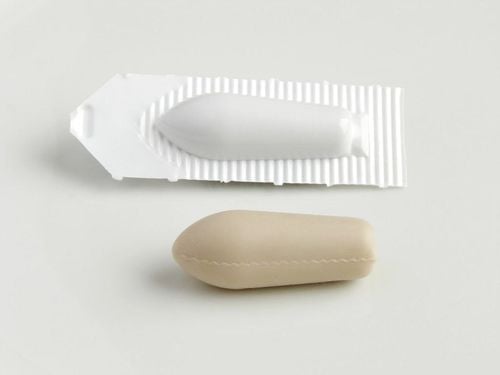Trichopol is an antibiotic that contains metronidazole as its active ingredient. The drug is administered via intravenous infusion and is performed by healthcare professionals. It is a prescription medication belonging to the group of antiparasitic, antibacterial, antiviral, and antifungal agents. What diseases does Trichopol treat?
1. What is Trichopol?
Trichopol 500mg is a drug with the active ingredient metronidazole. It is formulated as an intravenous infusion solution and is packaged in a box containing one 100ml FE bag. Each 10ml FE bag contains:
- Metronidazole 500mg.
- Excipient sufficient for 100ml.
Metronidazole is an antibiotic belonging to the nitro-5-imidazole group, which is effective in killing intestinal amoebae, anaerobic gram-negative bacteria, Giardia, and Trichomonas vaginalis.
Trichopol works by inhibiting the protein synthesis of bacteria and protozoa.
Due to this mechanism of action, Trichopol is prescribed for the following conditions:
- Amoebiasis.
- Treatment of urogenital infections caused by Trichomonas.
- Non-specific vaginitis.
- Infections caused by Giardia intestinalis.
- To treat infections caused by anaerobic bacteria during surgery.
- To prevent infections caused by anaerobic bacteria during high-risk surgeries.
- The drug is used continuously through intravenous infusion for the treatment or prevention of infections caused by anaerobic bacteria.
2. Dosage and Administration of Trichopol in Various Cases
2.1. Administration of Trichopol
Trichopol is formulated as an intravenous infusion solution; therefore, patients administering the medication orally or via infusion must do so under the guidance of healthcare providers.
The dosage of Trichopol 500mg varies by situation:
For oral administration: Patients should take approximately 30 - 50ml of the medication and use it after meals.
For intravenous administration:
- The medication may be infused directly or diluted with 0.9% NaCl solution, 5% glucose solution, glucose in 0.9% NaCl, or 40 mmol/l KCL solution in an appropriate volume.
- Infusions should be prepared immediately before using Trichopol.
- Connect to the bottle after purging air from the dual lumen port of the infusion device.
- Excess solutions should not be used, and the medication should not be administered if there are any changes in the solution.
- In patients with liver impairment: The medication may be metabolized slowly and may cause accumulation. Therefore, the dosage should be reduced to half of the typical dosage in such cases.
- In patients with renal impairment: Use the standard dosage as in normal patients.
- In elderly patients: Careful monitoring and attention are required when administering the medication.
For the treatment of anaerobic infections: Intravenous infusion is indicated when oral administration is ineffective.
- Treatment for adults and children over 12 years: Infuse 100 ml every 8 hours, with an infusion rate not exceeding 5 ml/min. The maximum dosage for adults is 4g, administered over 7 days. In severe cases, treatment duration may extend to 2 - 3 weeks.
- For children under 12 years: The infusion rate is 1.5ml/kg body weight every 8 hours.
For preoperative prophylaxis: The medication should be administered 5 - 10 minutes before surgery.
- For adults and children over 12 years: Trichopol is administered as a slow intravenous infusion of 100ml. The same dosage is given every 8 hours until transitioned to oral administration as soon as feasible. For prophylactic use, it should not be administered beyond 12 hours after surgery.
- For children under 12 years: Infusion of 1.5ml/kg body weight is performed.
Trichopol 500mg is primarily administered via intravenous infusion, and instances of missed doses are rare. Patients mostly experience situations of overdose.
- In cases of overdose through oral administration, neurological toxicity symptoms are rarely observed at dosages between 6 - 10.4mg of metronidazole over 5 days.
- Common symptoms in overdose cases include seizures and peripheral neuropathy.
- A single dose of 15g may induce vomiting and nausea, as well as loss of coordination.
- In instances of overdose, symptomatic treatment and supportive care should be initiated.
3. Contraindications for Trichopol
- Patients with a history of allergy to the medication or any component contained within.
- Patients with epilepsy.
- Patients with coagulation disorders.
- Women in the first trimester of pregnancy and breastfeeding women.
4. Adverse Effects Potentially Associated with Trichopol 500mg
During treatment, patients may experience several adverse effects, including:
- The most common symptoms are nausea, vomiting, diarrhea, abdominal discomfort, a metallic taste, and oral candidiasis.
- The medication may cause hematologic and lymphatic disorders: It can lead to leukopenia, thrombocytopenia, and overall hemocytopenia.
- The drug affects the nervous system: Symptoms may include peripheral neuropathy, paresthesia, seizures, dizziness, disorientation, and emotional lability.
- Ocular adverse effects: Diplopia and myopia may occur.
- Auditory effects: Symptoms of tinnitus and hearing loss may arise.
- Gastrointestinal disturbances: Dry mouth, stomatitis, and pancreatitis may occur; these symptoms typically resolve upon discontinuation of the medication.
- Dermatological issues: Skin lesions and rashes may be experienced.
- Musculoskeletal pain may occur.
- Effects on the immune system: The medication may cause sensitivity disorders, urticaria, pruritus, and angioedema.
If patients experience any of the above symptoms or any other unusual symptoms while using Trichopol, they should promptly report these to their physician for timely management.
5. Drug Interactions with Trichopol
- When administered in conjunction with anticoagulants, particularly warfarin, Trichopol may increase the risk of prothrombin elevation.
- Disulfiram should be discontinued at least 2 weeks before initiating Trichopol, as it may exacerbate neurological disturbances.
- Phenobarbital reduces the half-life of Trichopol, subsequently decreasing the plasma concentration of metronidazole.
- Trichopol may enhance renal toxicity, increasing plasma levels and lithium's toxicity.
- Concurrent use with cimetidine increases the half-life of metronidazole.
- Metronidazole reduces the clearance and raises the serum concentration of phenytoin.
- Patients are advised to refrain from alcohol consumption during treatment and for at least 48 hours after discontinuation of treatment.
6. What should be noted during the use of Trichopol?
When using Trichopol, patients should be aware of several points:
- Trichopol crosses the placental barrier and is contraindicated in the first trimester of pregnancy; during the second and third trimesters, a careful consideration of benefits versus risks is required.
- Metronidazole is excreted in breast milk, achieving concentrations in milk that are similar to serum levels. Therefore, Trichopol should not be used in breastfeeding women, or if it is necessary to use the medication, breastfeeding should be discontinued.
- Caution is advised when administering the drug to patients with central nervous system disorders, severe hepatic dysfunction, and hepatic encephalopathy.
- During the course of treatment, patients should be monitored for blood cell counts, particularly in those receiving the medication for more than 10 days.
- Trichopol is highly effective against infections caused by anaerobic bacteria. The drug is formulated for intravenous administration, which is performed by healthcare professionals, making overdose occurrences very rare. However, Trichopol can interact with multiple medications; therefore, it is essential to have a physician's prescription to ensure safety and effective disease treatment.
Follow the website of Vinmec International General Hospital for additional health, nutrition, and beauty information to protect your health and that of your loved ones.
To arrange an appointment, please call HOTLINE or make your reservation directly HERE. You may also download the MyVinmec app to schedule appointments faster and manage your reservations more conveniently.








